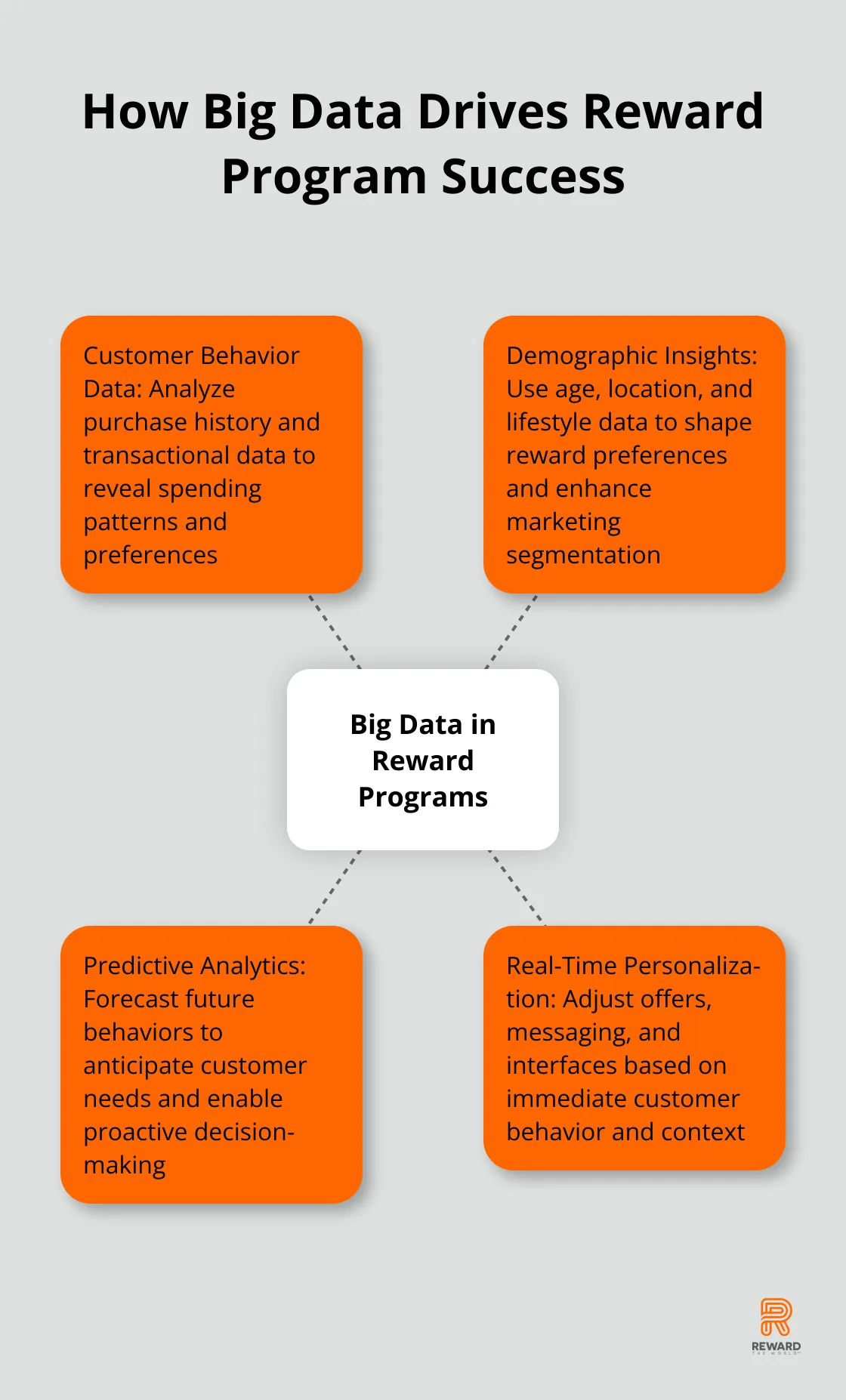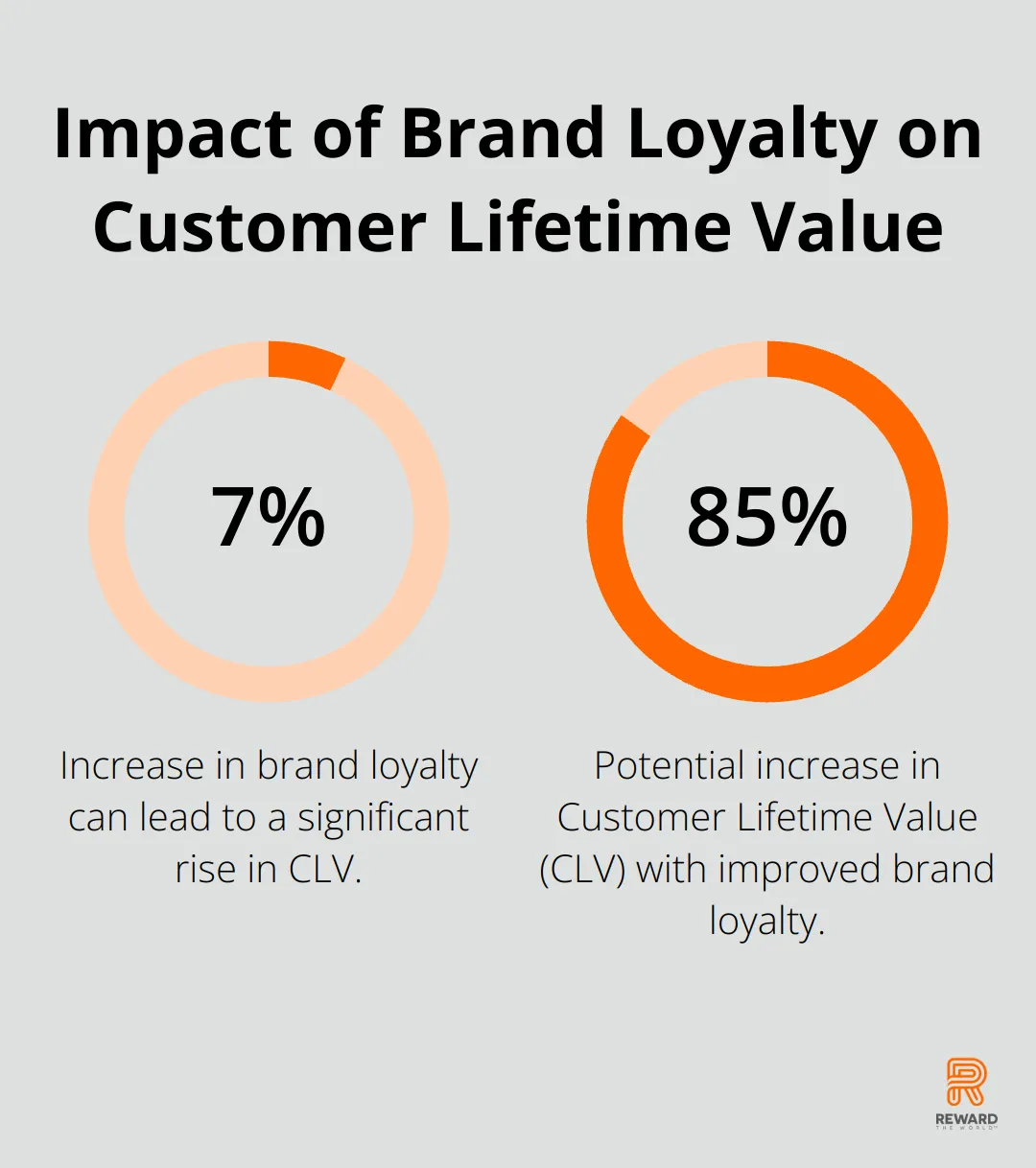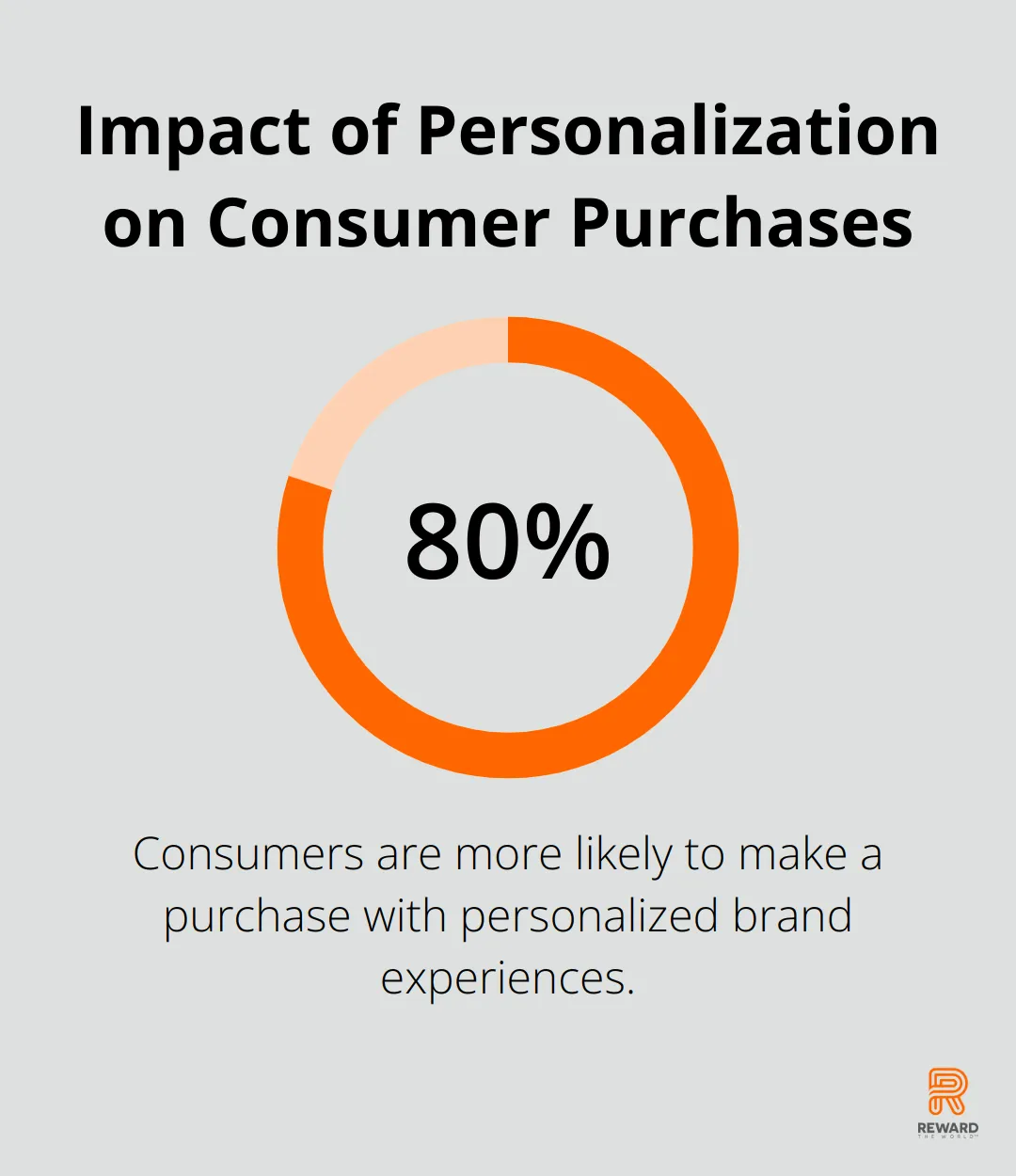
Big data has revolutionized the way businesses operate, and reward programs are no exception. At Reward the World, we’ve seen firsthand how harnessing the power of data can transform loyalty initiatives.
Loyalty analytics is the key to unlocking valuable insights that drive program success. In this post, we’ll explore how to turn raw data into actionable strategies that boost engagement and maximize ROI.
How Big Data Drives Reward Program Success
The Power of Customer Behavior Data
At Reward the World, we witness the transformative impact of big data on reward programs. These programs evolve from simple point-collection systems into powerful engines of customer engagement and business growth. Understanding customer behavior forms the foundation of any successful reward program. Analysis of purchase history reveals spending patterns, preferred products, and shopping frequency. This information enables the tailoring of rewards that resonate with individual preferences, increasing redemption likelihood and repeat purchases.
Transactional data tells you everything about what your customers are buying-how often they’re making purchases and how much they’re spending. Engagement data also plays a crucial role in understanding customer behavior.
Demographic and Psychographic Insights
Demographic and psychographic data provide a deeper understanding of customer profiles. Age, location, interests, and lifestyle choices (all crucial factors) shape reward preferences. Market segmentation can help enhance marketing efficiency by directing efforts toward the most receptive audience rather than using a blanket approach.
Starbucks exemplifies the power of data analytics in personalizing rewards programs. Their analysis of customer data led to tailored promotions, resulting in an increase in customer visits.
Enhancing Decision-Making with Predictive Analytics
Big data not only illuminates the past but also predicts the future. Predictive analytics uses historical data to forecast future behaviors, enabling anticipation of customer needs and preferences. This foresight allows proactive decision-making in reward program management.
Predictive analytics can be utilized to understand customer behavior, anticipate their needs, and create personalized experiences. This approach can boost customer loyalty and drive business expansion.
Real-Time Personalization and Optimization
The true power of big data lies in its ability to enable real-time personalization and optimization. Modern reward programs can adjust offers, messaging, and even user interfaces based on immediate customer behavior and context. This level of responsiveness creates a dynamic and engaging experience that keeps customers coming back.

As we move forward, the next challenge lies in transforming this wealth of data into actionable insights. The following section will explore the key metrics, analysis techniques, and tools that make this transformation possible.
Turning Data into Reward Program Gold
Metrics That Drive Success
Customer Lifetime Value (CLV) stands out as a key metric for reward programs. It predicts the total value a customer will bring to your business over their entire relationship. A brand loyalty survey shows that when a company achieves a 7% increase in brand loyalty, the CLV of each customer can rise by 85%.

Redemption Rate measures how often members use their rewards. A low rate might indicate unappealing rewards. The industry average is around 70%, but top-performing programs can achieve rates as high as 90%.
Churn Rate tracks customer attrition. The average annual churn rate for loyalty programs is about 20%. A higher rate signals a need to reassess your program’s value proposition.
Advanced Analysis Techniques
RFM analysis, which stands for Recency, Frequency, and Monetary value, is a technique that helps marketers identify their most valuable customers.
Cohort analysis groups customers based on shared characteristics or experiences and tracks their behavior over time. This technique reveals patterns in customer lifecycle and helps predict future behavior.
A/B testing optimizes reward offerings. Testing different reward structures, communication strategies, or user interfaces allows continuous refinement of your program. Companies that regularly conduct A/B tests see an average conversion rate increase of 49%.
Powerful Tools for Data Processing
Modern data processing tools handle the volume and complexity of big data in reward programs. Cloud-based platforms like Amazon Web Services (AWS) or Google Cloud Platform offer scalable solutions for data storage and processing.
For data visualization and analysis, Tableau and Power BI are industry standards. These tools create interactive dashboards that make complex data easily digestible.
Machine learning platforms such as TensorFlow or scikit-learn predict customer behavior and personalize rewards. Companies that use AI-powered personalization report up to 35% higher redemption rates compared to traditional segmentation methods.
The right combination of metrics, analysis techniques, and tools transforms reward programs into data-driven powerhouses of customer engagement and business growth. The next section explores how to implement these insights into your reward program strategy.
How to Implement Data-Driven Strategies in Your Reward Program
Personalize Rewards Based on Individual Preferences
Personalization transforms modern reward programs. Research from Epsilon indicates that 80% of consumers are more likely to make a purchase when brands offer personalized experiences. To start, analyze your customers’ purchase history, redemption patterns, and engagement data. This information allows you to create targeted reward offerings that resonate with each customer segment.

Consider this example: If a segment of your customers frequently purchases eco-friendly products, offer rewards from sustainable brands or donations to environmental causes. This level of personalization increases redemption rates and strengthens emotional connections with your brand.
Predict Future Customer Behavior
Predictive analytics revolutionizes reward program management. By using historical data and machine learning algorithms, you can anticipate customer needs and behaviors. By better integrating their loyalty programs with pricing strategies, consumer-facing businesses can drive growth in a muddled economic landscape.
Identify key indicators of customer churn or increased engagement. A sudden decrease in program activity might signal a customer at risk of leaving. Use this insight to trigger personalized re-engagement campaigns before the customer becomes inactive.
Optimize Reward Timing and Delivery
The timing of reward offers significantly impacts their effectiveness. Analyze your data to identify peak engagement periods for different customer segments. Are certain customers more likely to engage with your program during weekends? Or perhaps in the evening hours?
Use these insights to schedule your reward communications for maximum impact.
Consider the delivery method of your rewards. Some customers might prefer instant digital rewards, while others value physical gift cards. Analyze redemption data to optimize your reward delivery methods, enhancing customer satisfaction and program efficiency.
Leverage Advanced Analytics Tools
To implement these strategies effectively, you need powerful analytics tools. Platforms like Tableau and Power BI (industry standards for data visualization and analysis) create interactive dashboards that make complex data easily digestible.
Machine learning platforms such as TensorFlow or scikit-learn help predict customer behavior and personalize rewards. AI-driven programs offer superior personalization, scalability, and efficiency compared to traditional methods.
Monitor and Adjust Your Strategy
Data-driven strategies require continuous monitoring and adjustment. Regularly review your key performance indicators (KPIs) such as Customer Lifetime Value (CLV), Redemption Rate, and Churn Rate.
Try to conduct A/B tests to optimize your reward offerings. Test different reward structures, communication strategies, or user interfaces.
Final Thoughts
Big data revolutionizes reward programs, transforming them into powerful engines of customer engagement and business growth. Loyalty analytics unlocks valuable insights that drive program success and maximize ROI. Advanced analysis techniques provide deeper insights into customer behavior, while powerful tools enable businesses to process and interpret vast amounts of data effectively.
Data-driven strategies in reward programs lead to personalized experiences, predictive capabilities, and optimized reward offerings. The future of data analytics in reward programs promises increased adoption of AI and machine learning technologies, enabling more sophisticated personalization and predictive capabilities. Real-time data processing and analysis will become the norm, allowing instant adjustments to reward offerings and communication strategies.
Reward the World helps businesses leverage the power of big data and loyalty analytics to create exceptional reward programs. Our platform offers robust analytics capabilities, seamless integration, and a vast array of reward options to suit diverse customer preferences. The businesses that thrive will effectively harness the power of data to create meaningful, personalized experiences for their customers.
